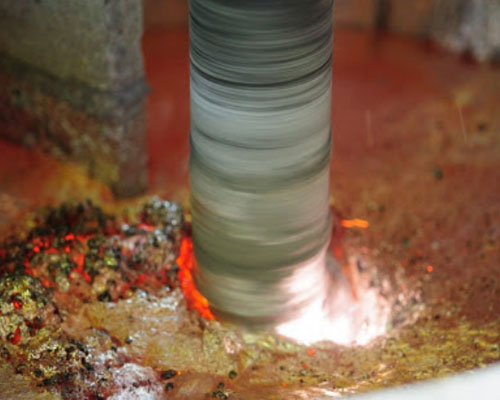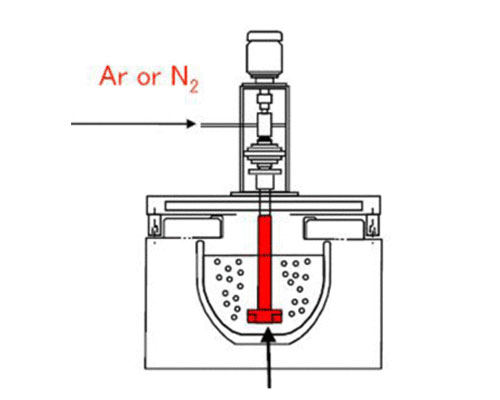In order to remove alkali elements (ie Na, Ca, K, Li), the use of chlorine-containing active flux gas is the accepted practice for processing molten aluminum. Under equilibrium conditions, the chlorides of each of these elements are produced as reaction products. With the exception of LiCl, all these halide salts, as pure substances, are solid at normal processing temperatures, so they are easily separated on the surface of the melt and removed by skimming.
Alkali elements are usually present in melt concentrations below 500 ppm. According to the law of mass action (the reaction rate is proportional to the concentration of the reactant), non-equilibrium metastable salts are generated, such as AlCl3 and MgCl2 (if Mg is present). These halides are undesirable because they contribute greatly to processing of airborne emissions. In addition, MgCl2 melts at 1306°F and usually melts at the normal melting process temperature. Molten salt is very undesirable because it is difficult to remove to the surface for skimming. Therefore, there is a great need to react alkali metal elements to produce higher melting point salts, which are more effectively separated to the surface in solid form by flotation.
In the existing method of dispersing the flux gas, for example, in the molten aluminum body, the fluxing gas is introduced into the main body downward in the axial direction, and is dispersed by a rotating impeller mounted on the shaft. However, this method is not without limitations. The rotating impeller generates a vortex around the shaft, which indicates that most of the molten metal rotates around the impeller shaft at a rate close to the speed of the impeller. The flux added to the molten metal tends to circulate with the molten metal with very little dispersion. In addition, the vortex has the effect of increasing the surface area of the melt exposed to the air. The increased exposure of molten metal to the air leads to increased scum formation, subsequent entrainment of scum, and its adverse collateral effects.

When the fluxing material is a gas, eddy currents can cause problems in another way. The flux gas moves to the center of the vortex, and as a result, the other parts of the melt are not sufficiently processed by the fluxing gas. Therefore, the effectiveness of the process is reduced because part of the melt is not processed by the flux material. In addition, the flux gas entrained in the molten metal flow pattern tends to coalesce, resulting in larger flux gas bubbles in the melt. Larger bubbles reduce the efficiency of the fluxing process because less molten metal is processed.
Therefore, there is a great need for a more effective flux process, which inhibits the absorption of slag from the surface back into the melt through the formation of eddy currents, for example, to keep the flux finely dispersed in the entire melt, and to strengthen the contact of the molten metal. The molten material improves the melting of the melt. In addition, there is a great need for an improved ceramic foam filtration method for molten aluminum filtration.

